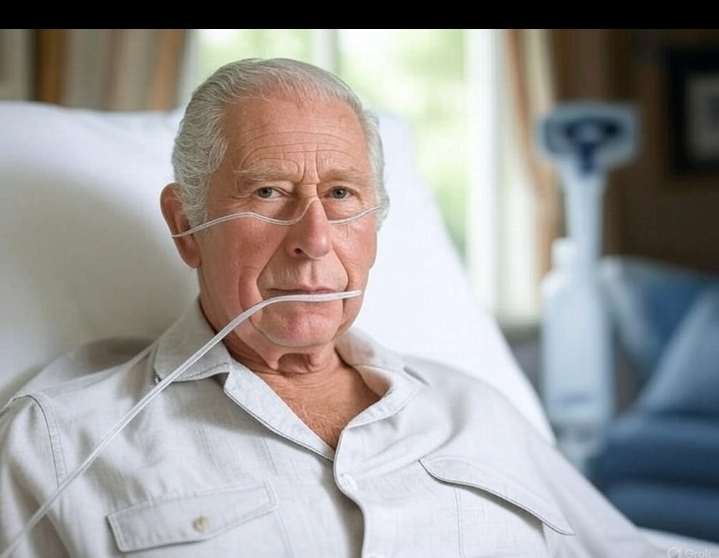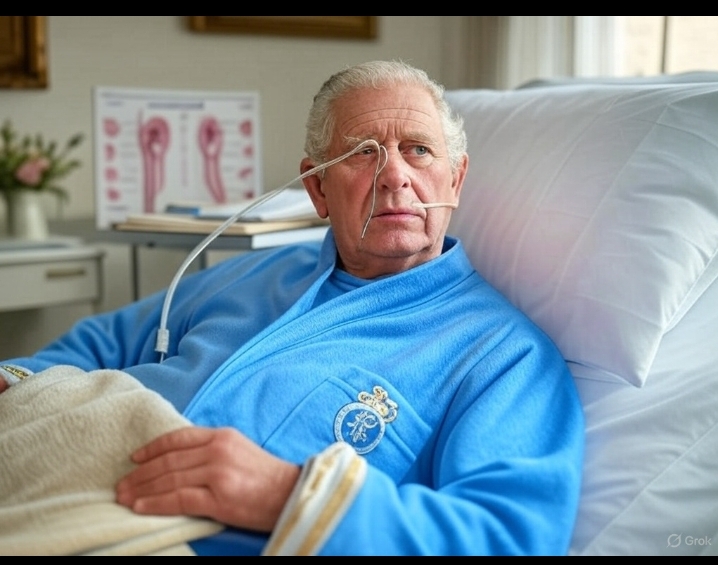NEWS
Royal News:King Charles been in hospital following side effects of his cancer treatment… See more details

Royal News:King Charles been in hospital following side effects of his cancer treatment… See more detail.
On Thursday, March 27, 2025, King Charles III, the reigning monarch of the United Kingdom, was briefly admitted to the hospital after experiencing temporary side effects from his ongoing cancer treatment. The news, announced by Buckingham Palace late that evening, has drawn widespread attention and well-wishes from across the globe. This development comes more than a year after the King’s cancer diagnosis was first made public in February 2024, marking a significant moment in his health journey as he continues to balance his royal duties with medical care. Here, we explore the details of this event, the King’s health timeline, and the broader implications for the monarchy.
The Hospitalization: What Happened?
According to a statement from Buckingham Palace, King Charles underwent “scheduled and ongoing medical treatment for cancer” on the morning of March 27, 2025. Following the procedure, the 76-year-old monarch experienced “temporary side effects” that necessitated a short period of observation at The London Clinic, a private hospital in central London where he has previously received treatment. The Palace emphasized that the side effects were not unexpected, describing them as “temporary and not uncommon with many medical treatments.” While specific details about the nature of the side effects were not disclosed, royal sources reassured the public that the incident was a “minor bump in a road that is very much heading in the right direction.”
The King was transported to and from the hospital by car and was not accompanied by Queen Camilla during his brief stay. After a period of observation, he was discharged later that day and returned to Clarence House, his official London residence. However, as a precautionary measure and on the advice of his medical team, Charles postponed his scheduled engagements for Thursday afternoon and canceled a planned “away day” to Birmingham on Friday, March 28. In the Palace’s statement, the King expressed his apologies to those who might be “inconvenienced or disappointed” by the rescheduling.
A Timeline of King Charles III’s Health Journey:

King Charles III’s health challenges first came to public attention in January 2024, when Buckingham Palace announced that he would undergo a routine procedure for a benign enlarged prostate. On January 26, he was admitted to The London Clinic for the surgery and was discharged three days later. However, during this procedure, doctors identified a separate issue, leading to further diagnostic tests. On February 5, 2024, the Palace revealed that the King had been diagnosed with an undisclosed form of cancer. The type and stage of the cancer have remained private, a decision that reflects the royal family’s preference for discretion while aiming to raise awareness about the disease.
Following his diagnosis, Charles stepped back from public-facing duties for approximately three months, though he continued to handle state business, such as reviewing government papers and meeting with Prime Minister Sir Keir Starmer. By April 2024, he resumed public engagements, a move that signaled a positive response to his weekly treatment regimen. Throughout the year, the King maintained a busy schedule, including a notable two-week tour of Australia and Samoa in October 2024—his first major overseas trip since the diagnosis—during which he temporarily paused his treatment. Palace sources described this journey as a “perfect tonic” for the monarch, highlighting his resilience and commitment to his role.
Despite his return to work, Charles’s treatment has continued into 2025, with royal aides confirming in December 2024 that it would extend into the new year as a “managed condition.” The events of March 27 underscore that, while his recovery is trending positively, the King remains in active treatment, and occasional adjustments to his schedule are necessary.
Reactions and Support:
The news of the King’s hospitalization prompted an outpouring of support from public figures and citizens alike. Prime Minister Sir Keir Starmer expressed his “best wishes” to His Majesty, with a spokeswoman noting that the government stood in solidarity with the royal family during this time. Social media platforms, including X, buzzed with messages of concern and encouragement from users worldwide, reflecting the public’s affection for the monarch.
Royal commentators have praised Charles’s transparency about his condition, a departure from the more guarded approach of previous generations. His decision to share his diagnosis in February 2024 was intended to curb speculation and offer solidarity to others affected by cancer—a gesture that has resonated deeply with the public. This latest update, while a reminder of his ongoing battle, has been framed by Palace insiders as a routine part of his treatment journey rather than a cause for alarm.
Implications for the Monarchy:
King Charles III’s hospitalization, though brief, raises questions about the monarchy’s operations amid his health challenges. Known for his workaholic nature, Charles has thrived on public and state duties, which he views as beneficial to his well-being. His medical team has worked closely with Palace staff to tailor his schedule, ensuring that his recovery remains the priority. The cancellation of the Birmingham engagements—where he was set to undertake four back-to-back events—demonstrates this cautious approach.
Looking ahead, the King’s planned state visit to Italy from April 7 to 10, 2025, alongside Queen Camilla, is still expected to proceed as scheduled. A separate visit to the Vatican to meet Pope Francis, postponed earlier in the week due to the Pope’s recent illness, may also be rescheduled. These commitments reflect Charles’s determination to fulfill his role as head of state, even as he navigates his treatment.
The King’s health also places additional focus on the next generation of royals. His daughter-in-law, Catherine, Princess of Wales, faced her own cancer diagnosis in 2024 but announced her remission in January 2025. Meanwhile, Prince William, the heir to the throne, has taken on an increasingly prominent role, supporting his father and preparing for his future responsibilities.
Understanding Cancer Treatment Side Effects:
While the Palace has not specified the side effects Charles experienced, medical professionals note that cancer treatments—such as chemotherapy, radiotherapy, or immunotherapy—can cause a range of temporary issues. These may include fatigue, nausea, infections due to a weakened immune system, or inflammation, all of which might require monitoring. The fact that Charles was discharged the same day suggests that the episode was manageable and not indicative of a significant setback.
A Monarch’s Resilience:
King Charles III’s brief hospitalization on March 27, 2025, serves as a poignant reminder of his ongoing fight against cancer, a battle he has faced with characteristic determination and optimism. As he continues his treatment, the monarch remains committed to his duties, buoyed by the support of his family, his medical team, and the public. While this latest development has necessitated a temporary pause, it does not alter the broader narrative of his recovery—a journey that royal sources describe as moving firmly in a positive direction.
As the world watches, King Charles’s experience underscores the universal challenges of cancer, transcending his royal status to connect with millions who face similar struggles. For now, he rests at Clarence House, preparing to resume his work with the same resolve that has defined his reign.


















